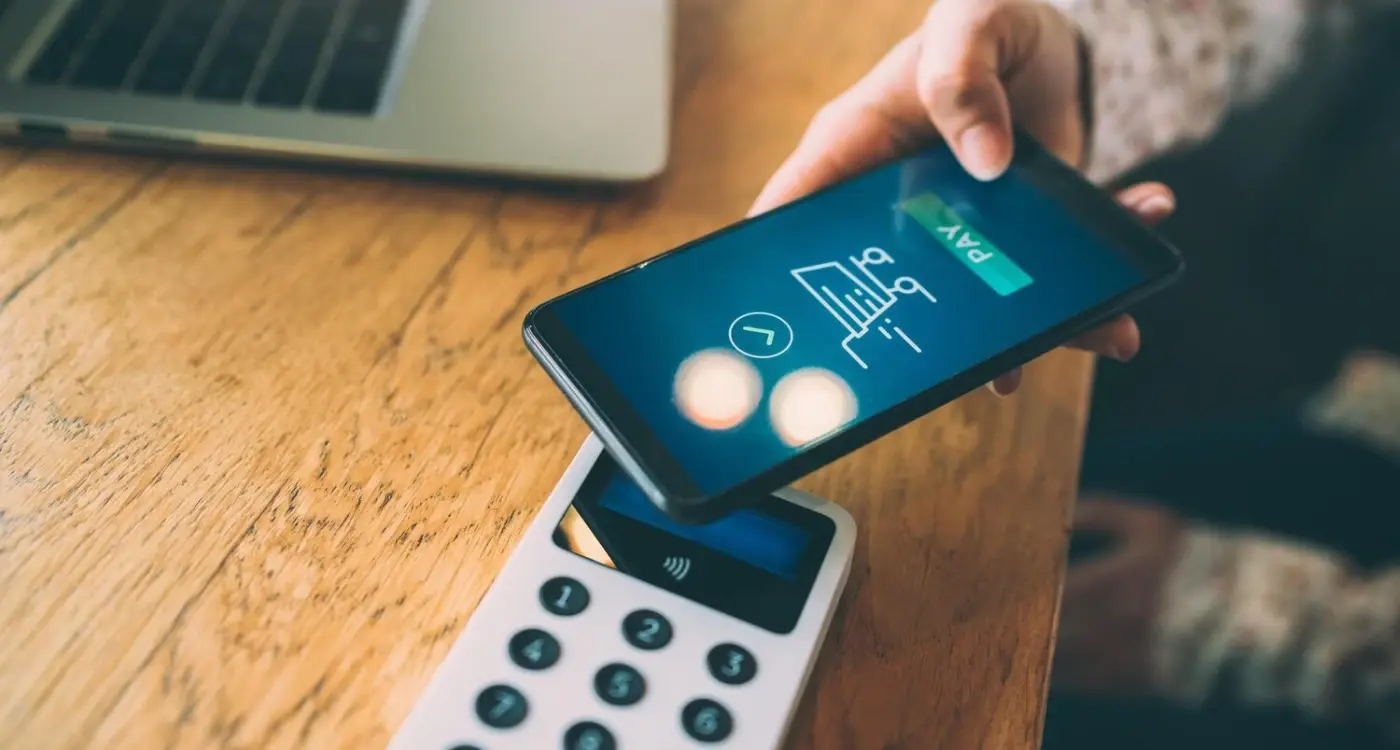How Do You Budget for Different App Store Fees?
App store fees can make or break your mobile app budget if you're not careful. I've seen too many clients get blindsided by the various costs involved in getting their app to market—and it's not just the obvious commission rates that catch people out.
When you're planning your app's financials, you need to think beyond just the development costs. Sure, building the app is expensive enough, but the ongoing fees for distribution, payments, and maintenance can really add up over time. And here's the thing—these costs vary dramatically depending on which platforms you choose, how you monetise your app, and where your users are located around the world.
The mobile app industry has become incredibly competitive, which means every penny counts when it comes to your margins. What used to be straightforward "30% to Apple, 30% to Google" has evolved into a complex web of different fee structures, reduced rates for small developers, and various payment processing charges that can seriously impact your bottom line.
Understanding store fees isn't just about knowing what percentage they'll take—it's about planning for the long-term sustainability of your app business
I've worked with startups who've had to pivot their entire business model after discovering their profit margins were too thin to handle the store commissions. On the flip side, I've helped established companies save thousands by properly structuring their app monetisation strategy around the fee structures. The key is knowing exactly what you're getting into before you commit to a particular approach—because changing direction later can be costly and time-consuming.
Understanding App Store Commission Structures
Right, let's talk about something that catches a lot of people off guard—app store commissions. When I first started developing apps, I'll be honest, I didn't fully grasp how these fees would impact my clients budgets. It's not just about the upfront costs; these commission structures can make or break your apps profitability.
The two main players—Apple's App Store and Google Play—both take a cut of your revenue, but their structures are different enough that you need to understand both if you're planning to launch on multiple platforms. Apple takes 30% of all sales for the first year, then drops to 15% for subscribers who stick around beyond 12 months. Google Play follows a similar model but they've recently introduced a 15% rate for the first $1 million in revenue each year, which is actually quite helpful for smaller developers.
Commission Breakdown by Revenue Type
| Revenue Type | Apple App Store | Google Play Store |
|---|---|---|
| App Sales | 30% | 30% (15% for first $1M) |
| In-App Purchases | 30% | 30% (15% for first $1M) |
| Subscriptions (Year 1) | 30% | 30% (15% for first $1M) |
| Subscriptions (Year 2+) | 15% | 15% |
Here's what really matters though—these percentages apply to your gross revenue, not your profit. So if your app makes £10,000 in its first month, you're immediately looking at £3,000 going to the app store. That's before you factor in your development costs, marketing spend, or any other business expenses. When you're planning your budget, you need to work backwards from these commission rates to figure out what you actually need to charge to make your target profit.
Apple App Store Fees and Requirements
Right, let's talk about Apple's fees because honestly, they're pretty straightforward once you know what you're dealing with. The main thing you need to know is Apple's 30% commission on most transactions—but here's where it gets interesting, they actually have different rates depending on your situation.
First up, you'll need an Apple Developer Account which costs £79 per year. No way around this one I'm afraid; it's your entry ticket to the App Store. But the real conversation starter is their commission structure, and Apple has made some changes that actually help smaller developers quite a bit.
Commission Rates That Actually Matter
Apple's Small Business Programme is genuinely useful if you're just starting out. If your app makes less than $1 million per year, you only pay 15% commission instead of 30%. That's a massive difference when you're trying to build a sustainable business. Once you cross that million-dollar threshold though, you're back to the standard 30% rate.
For subscriptions, Apple drops their commission to 15% after the first year of each subscriber—which means if someone stays subscribed for over 12 months, you keep more of their money. Smart move on Apple's part really, as it encourages developers to focus on retention rather than just acquisition.
| Revenue Tier | Commission Rate | When It Applies |
|---|---|---|
| Under $1M annually | 15% | Small Business Programme |
| Over $1M annually | 30% | Standard rate |
| Subscriptions (Year 2+) | 15% | After 12 months per subscriber |
Keep detailed records of your revenue throughout the year. If you're approaching that $1 million threshold, you might want to consider timing your marketing pushes carefully to maximise your time in the 15% commission bracket.
One thing that catches people off guard is that Apple doesn't charge commission on physical goods sold through apps. So if you're selling actual products and just using the app as a storefront, you can use your own payment system without giving Apple their cut.
Google Play Store Costs and Policies
Right, let's talk about Google Play Store fees—which are actually pretty similar to Apple's setup, though Google tends to be a bit more flexible with their policies. The basic commission structure is the same: 30% for most apps, dropping to 15% after your first million in revenue each year. But here's where it gets interesting—Google also offers that reduced 15% rate for subscription services from day one, which is quite nice if you're planning a subscription-based app.
The developer registration fee is much friendlier than Apple's annual subscription model. You pay a one-time fee of $25 to register as a Google Play developer, and that's it—no yearly renewals to worry about. Honestly, this makes Google Play much more accessible for indie developers or those just testing the waters with their first app.
Policy Differences That Matter
Google's policies around app content and functionality are generally less strict than Apple's, though they're still quite thorough about security and user safety. They allow more flexibility with alternative payment systems in certain regions—something that's been evolving rapidly due to various legal challenges around the world. You'll also find their app review process is typically faster, usually taking a few hours to a couple of days rather than Apple's longer review cycles.
One thing to keep in mind: Google Play's reach extends to many more countries and regions than the App Store, which means more potential revenue streams but also more complex regional pricing considerations. The platform also integrates nicely with Google's advertising ecosystem, which can help with user acquisition if you're planning to run ads through Google's network.
Developer Account Registration Expenses
Right, let's talk about the upfront costs—the ones you'll need to pay before your app even sees the light of day. Developer account registration is basically your entry ticket to the app stores, and honestly, it's one of the simpler parts of budgeting for app distribution. But there are still a few things that catch people off guard.
Apple charges £79 per year for their Developer Program membership. That's non-negotiable if you want to publish on the App Store. Google Play is different—they charge a one-time fee of £20 for their developer account. Much cheaper in the long run, which is why you'll often see more experimental apps on Android; the barrier to entry is significantly lower.
Enterprise and Special Accounts
Here's where it gets interesting. If you're building apps for internal company use, Apple's Enterprise Program costs £249 per year. That's quite a jump from the standard fee, but it gives you the ability to distribute apps privately within your organisation without going through the App Store review process.
The biggest mistake I see companies make is forgetting that developer accounts need renewing, and if you miss that renewal date, your apps get pulled from the stores immediately.
For most businesses, these registration costs are fairly manageable—we're talking about less than £100 per year for both platforms combined. But don't forget to factor in renewals when you're doing your annual budgeting. I've seen apps disappear overnight because someone forgot to renew their developer account. It's a bit embarrassing when you have to explain to clients why their app vanished from the store because of a £79 oversight!
In-App Purchase and Subscription Fees
Right, let's talk about the fees that actually make or break most apps these days—in-app purchases and subscriptions. I mean, this is where the real money changes hands, and frankly, where most developers get a bit of a shock when they see their first payout.
Both Apple and Google take their standard 30% cut on all in-app purchases and subscription revenue. But here's where it gets interesting—if you can keep subscribers for more than a year, Apple drops their commission to 15% from the second year onwards. Google does the same thing, which is bloody helpful if you're building a business around recurring revenue.
How the Numbers Actually Work
Let's say your app makes £1,000 in subscription revenue this month. You'll see roughly £700 land in your account after the stores take their cut. It's not exactly rocket science, but you need to factor this into your pricing from day one—not as an afterthought when you're wondering why your revenue looks lower than expected.
The payment processing happens automatically through each stores system, which means you don't need to worry about setting up separate payment gateways or handling customer payment details. That's actually quite handy, even if it does cost you that 30%.
Small Business Program Benefits
If your app makes less than $1 million per year, both stores offer reduced commission rates of 15%. Apple calls it their Small Business Program, and Google has their Play Media Experience Program. You need to apply for these, and honestly, most developers qualify.
- Apple: 15% commission for first $1M in annual revenue
- Google: 15% commission for first $1M across all apps
- Automatic renewal handling included in both programs
- Customer service support for subscription issues
The thing is, these fees aren't going anywhere. They're part of the cost of doing business on mobile, so build them into your financial planning from the start. Your app needs to be profitable at 70% of its gross revenue, not 100%.
Payment Processing and Transaction Costs
Here's something that catches many developers off guard—payment processing fees stack on top of app store commissions. It's a bit mad really, but Apple and Google charge their usual 15-30% commission, then payment processors take another slice for handling the actual transaction.
For apps using in-app purchases or subscriptions, you're looking at payment processing fees ranging from 2.9% to 3.5% per transaction. But here's where it gets tricky; different payment methods carry different costs. Credit card transactions typically cost more than bank transfers, and international payments? They're the most expensive of all.
Managing Multiple Payment Gateways
I've worked with clients who thought they could avoid these fees by using cheaper payment processors, only to discover that users abandon purchases when they don't recognise the payment gateway. Trust matters more than saving a few pence on processing fees.
Regional differences add another layer of complexity. European payments often go through different processors than US ones, each with their own fee structure. Some countries prefer local payment methods like SEPA in Europe or Alipay in China—and these can have completely different pricing models.
Transaction Volume Discounts
The good news? Most payment processors offer volume discounts once you hit certain thresholds. If you're processing over £10,000 monthly, you can usually negotiate better rates. But getting there means factoring in higher initial costs whilst building your user base.
Currency conversion adds another 1-3% for international transactions. So if you're selling a £2.99 app to someone in Japan, you might pay app store commission, processing fees, and currency conversion charges—it all adds up quickly.
Set aside 5-8% of your revenue specifically for payment processing costs. This covers the various fees and gives you breathing room for international transactions and currency fluctuations.
Regional Pricing and Currency Considerations
Here's something that catches many developers off guard—app store pricing isn't just about setting one price and forgetting it. Both Apple and Google have regional pricing structures that can make your head spin if you're not prepared for them.
When you set your app price, you're actually setting it in what's called price tiers. Apple has around 900 price points across different regions, and Google Play uses local pricing that adjusts based on purchasing power in each country. What costs £2.99 in the UK might be ₹299 in India or $3.99 in the US. The stores handle this automatically, but you need to understand how it affects your revenue.
Currency Exchange Impact on Your Bottom Line
Currency fluctuations can seriously mess with your revenue projections. I've seen developers lose 15-20% of their expected income purely because of exchange rate changes between when sales happened and when they received payment. Apple pays monthly in your local currency, but there's always a delay—and exchange rates don't wait for anyone.
Google Play offers local currency payouts in many regions, which can help reduce this risk. But you still need to factor in their currency conversion fees, which typically run around 1-2% on top of everything else.
Some regions also have different tax implications. The EU requires VAT collection, which the stores handle, but it comes out of your revenue. Countries like India have additional compliance requirements that might affect how much you actually receive per sale.
- Monitor exchange rates regularly if you have significant international sales
- Consider hedging strategies for large revenue streams in volatile currencies
- Factor in regional tax requirements when calculating profit margins
- Use App Store Connect's financial reports to track currency impact over time
The key is building these variables into your financial planning from day one, not discovering them after your first international success.
Hidden Costs You Need to Know About
Right, let's talk about the costs that nobody warns you about when you're budgeting for app store publishing. These are the ones that catch most developers off guard—and honestly, they can add up to quite a bit if you're not prepared.
First up is localisation. Sure, you might think publishing in English is enough, but if you want to compete globally, you'll need translations for app store listings, screenshots, and potentially your entire app interface. We're talking anywhere from £50-200 per language just for store content, and that's before you even touch the actual app text.
Marketing and Promotion Expenses
Then there's the marketing side that people always underestimate. App Store Optimisation tools can run £100-500 monthly; paid user acquisition campaigns start at around £1000 minimum to see any meaningful results. And don't get me started on the cost of creating proper app preview videos—budget at least £2000-5000 if you want something that doesn't look like it was made on your phone.
The biggest shock for most clients isn't the store fees themselves, but realising that getting your app noticed costs more than building it in the first place
Technical Maintenance Costs
Legal compliance is another sneaky one. GDPR compliance audits, privacy policy creation, terms of service—these can easily cost £2000-5000 depending on your app's complexity. Plus there's ongoing costs like crash reporting tools (£50-200/month), analytics platforms, and cloud hosting that scales with your user base.
Finally, don't forget about updates and maintenance. Apple and Google regularly change their requirements, which means you'll need developer time to keep your app compliant. Budget at least 20% of your initial development cost annually for updates and bug fixes—trust me on this one! If you're adding features like GPS functionality or mapping services, these ongoing costs can increase even further.
Right, we've covered a lot of ground here—from Apple's 30% cut to Google's commission structure, developer accounts to those sneaky hidden fees that can catch you off guard. The truth is, budgeting for app store fees isn't just about doing the maths once and forgetting about it; it's an ongoing process that needs to adapt as your app grows and evolves.
I've seen too many developers get blindsided by costs they hadn't factored in. You know what the biggest mistake is? Treating these fees as an afterthought rather than building them into your financial planning from day one. When you're calculating your app's potential profitability, these costs need to be front and centre—not buried in the small print of your business plan.
Here's what I tell all my clients: create a spreadsheet that accounts for every fee we've discussed. Start with your developer account costs, factor in the commission rates for your monetisation model, add payment processing fees, and don't forget about currency conversion if you're selling globally. Then—and this is important—add a buffer of about 10-15% for unexpected costs. Trust me on this one.
The app store landscape keeps changing too. Commission rates have shifted in recent years, new fee structures get introduced, and what works in one region might not work in another. Your budget needs to be flexible enough to handle these changes without derailing your entire business model.
At the end of the day, understanding these costs upfront means you can make informed decisions about pricing, features, and monetisation strategies. It's not the most exciting part of app development, but getting it right sets you up for long-term success rather than unpleasant surprises down the road.
Share this
Subscribe To Our Learning Centre
You May Also Like
These Related Guides

How Do I Budget for Customer Support in My App?

How Will Payment Processing Fees Affect My App's Profit?



